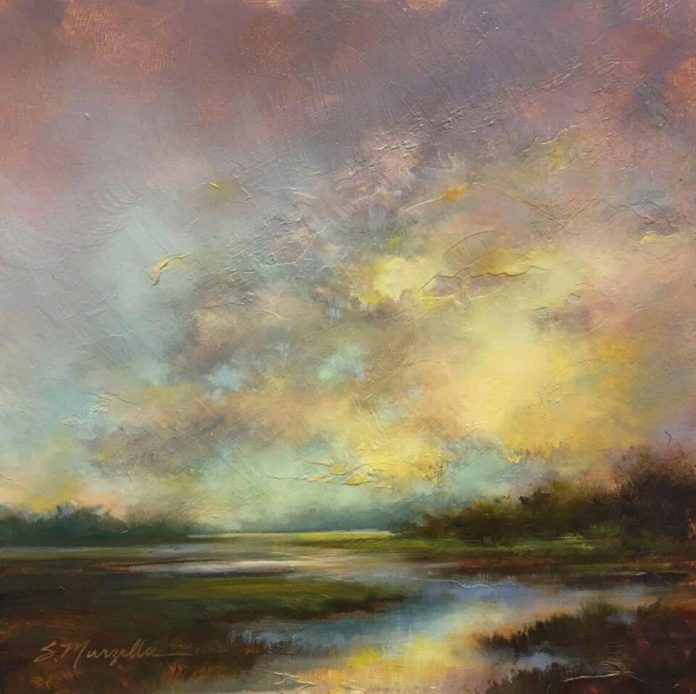A plein air painting session for Stephanie Marzella can last six hours in her new home in South Carolina. Why?
“I do not capture the light,” Marzella states. “I don’t paint fast. It takes me six hours when I go out to paint. My goal is to capture the feel of the place, the spirit of it. Every one of my plein air paintings encompass several times of the day. I like that. I am not there to capture the scene. I am there to make it my own. I use plein air as experimentation.”
Marzella has a working process that stays the same, inside the studio and outdoors. And she will stop working on a piece at almost any point. When she feels it’s finished, it’s done, regardless of where it might be in the painting process.
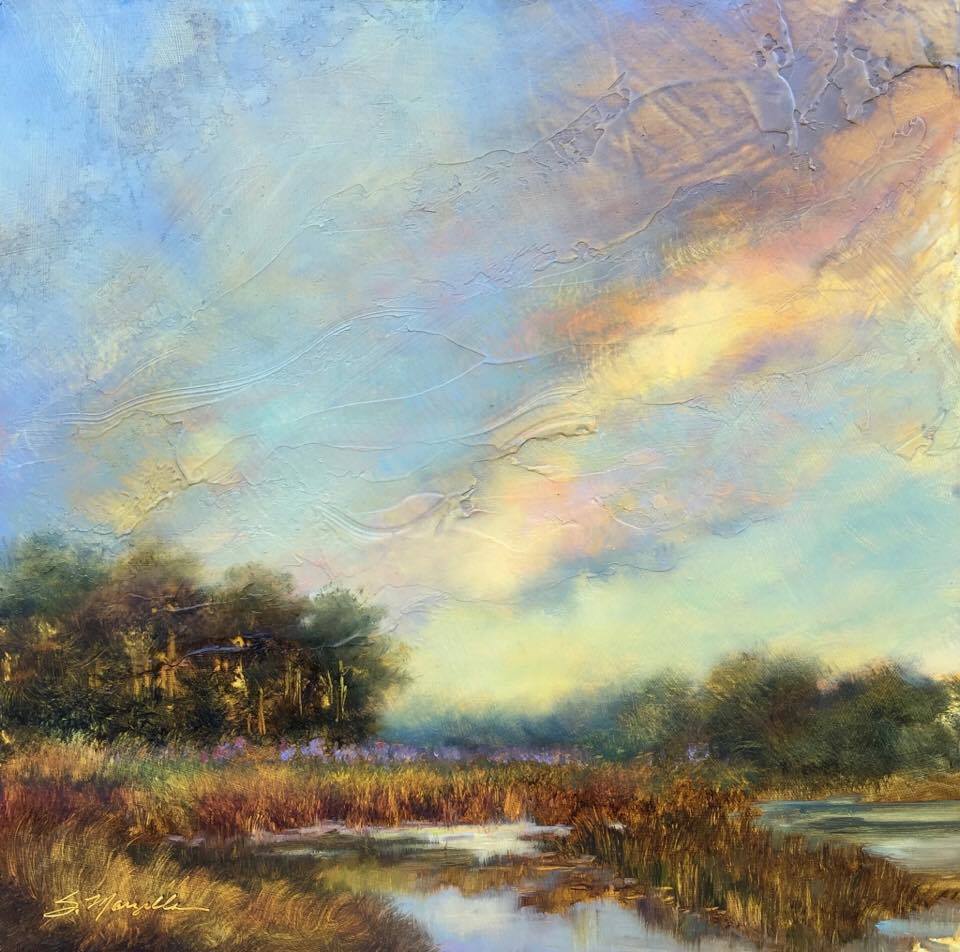
“My plein air work is very much tied to my studio work,” says Marzella. “I start them all with a tonal underpainting. It is completely tonal when it begins.” She is describing her underpainting, which is monochromatic, usually painted in asphaltum, a transparent brown. “It is amazingly versatile,” says Marzella. “It’s dark chocolate brown, but when wiped, it’s a warm yellow oxide. It can even go toward a transparent red oxide—all out of one tube of color. That and transparent orange are two colors I would die without.”
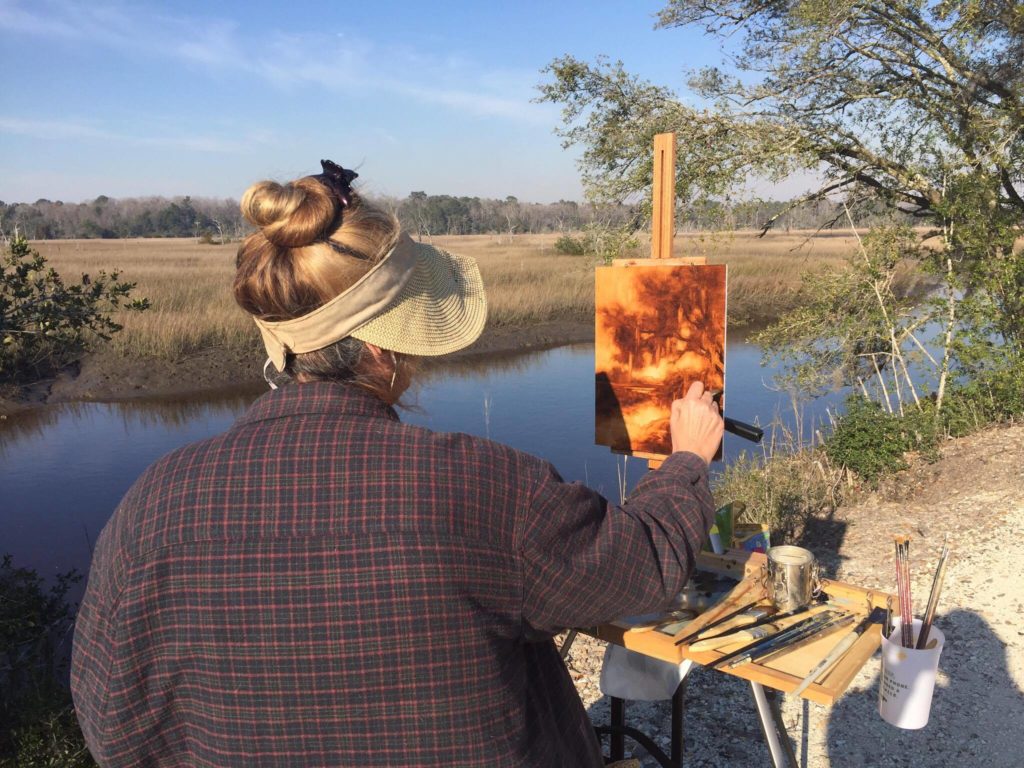
She achieves the monochromatic underpainting by coating most of the canvas in asphaltum, then wiping out to create lights using rags, rubber scrapers, paper towels, and brushes. If she knows that an area needs clean color, she will refrain from applying asphaltum in that spot.
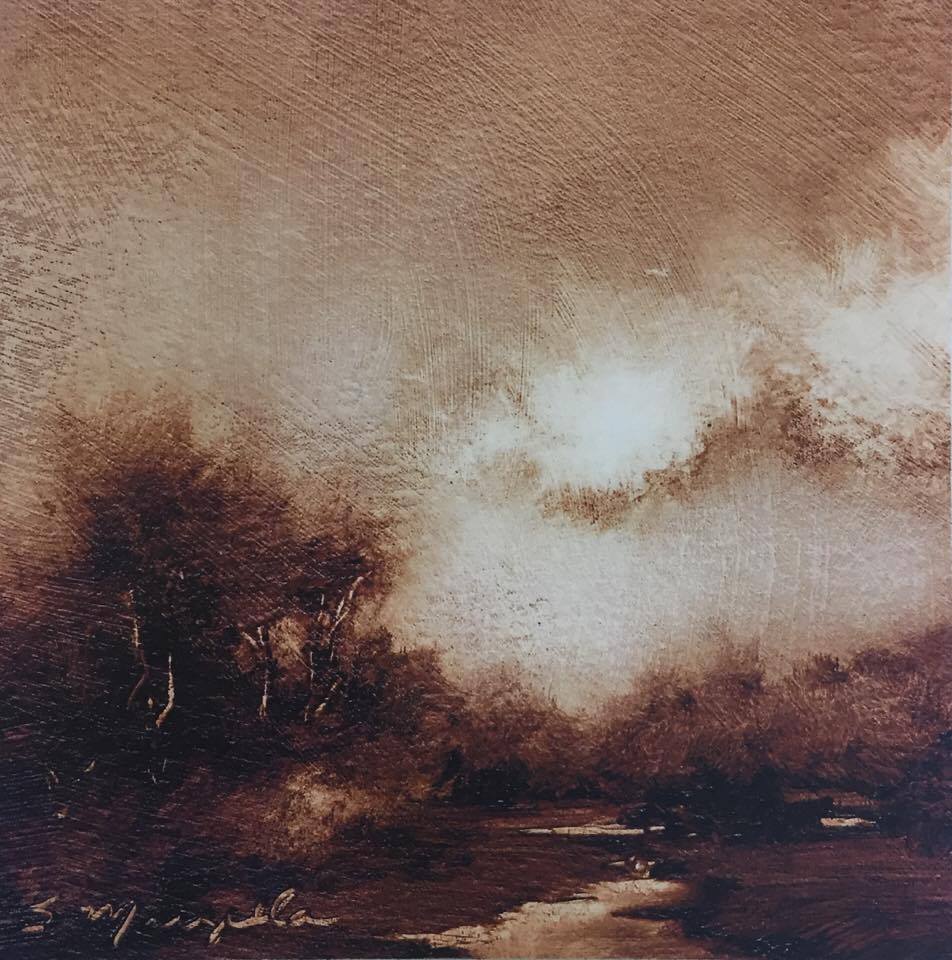
Marzella stops right there if the underpainting appeals to her, and she considers it a finished tonal painting. Sometimes, she begins the next stage of painting, glazing transparent layers of color over the monochromatic underpainting. She may stop after just a few colors are laid in, or she may keep layering until the colors are saturated.
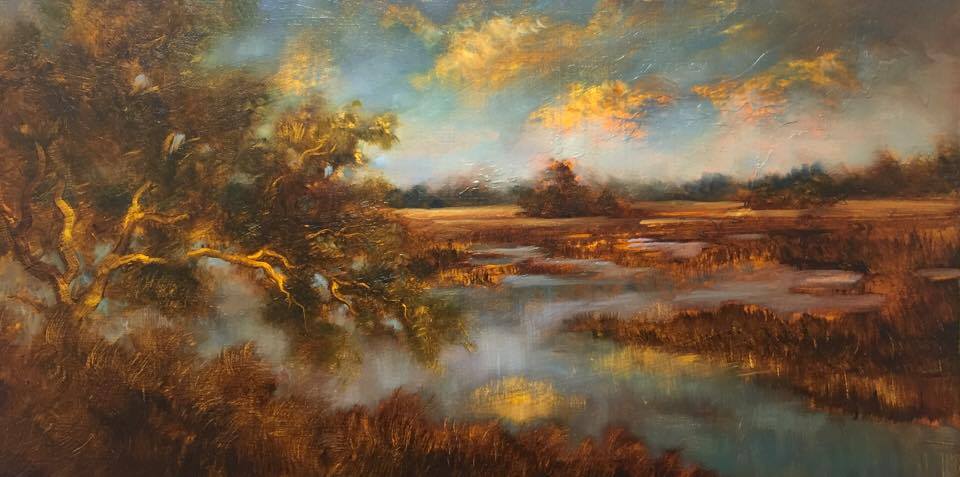
This process requires patience on location. In the studio, Marzella works on as many as 40 paintings at a time, glazing one, then moving on to the next. Lately she has been favoring textured surfaces that she prepares ahead of time. “I have been getting more and more into texture,” she says. “It creates a mood. I want people to feel the heat and humidity and the swampiness of South Carolina.”
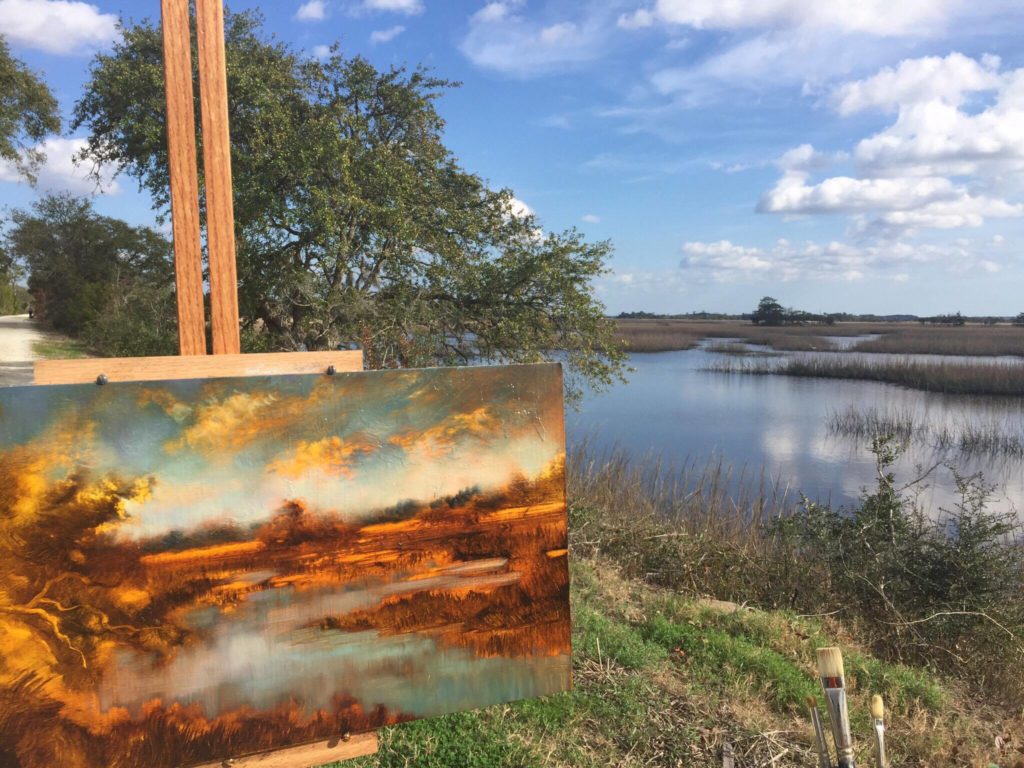
She moved from Rhode Island recently, drawn to Charleston, South Carolina, and its tidal creeks, low country, and big sky. She’s still adapting to the change. “The sky is warmer and the sunsets are very pastel in comparison to Rhode Island, where they were very intense,” says Marzella. “But I enhance my colors anyway. I don’t stick to what I see; I paint what I feel. I love trees, and these live oaks here, with moss hanging off of them, are very romantic. I am very intrigued by that. I’m excited to see what effect it will have on my work.”
Her favorite place to paint is a greenway in the Charleston neighborhood of West Ashley—a converted train track that allows biking and walking on an eight-mile path between two tidal marshes. “It’s just 10 minutes away,” says Marzella. “Both sunrise and sunset are paintable there. I love to paint reflective water, and I can there. It has a million potential paintings in just a two-mile strip of it. I haven’t even seen the entire trail yet!”

